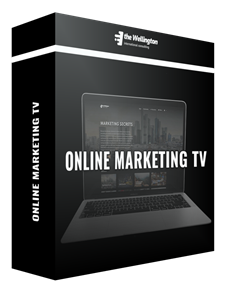The Ultimate Guide to Email + SMS Marketing Integration in 2024
Introduction
In today’s fast-paced digital marketing landscape, businesses need to leverage multiple communication channels to engage their audience effectively. One of the most powerful combinations is email and SMS marketing integration. While email marketing offers detailed and visually rich content, SMS delivers instant, high-engagement messaging. Together, they create a multi-channel marketing strategy that enhances customer experience, boosts engagement, and maximizes conversions.
This guide will take an in-depth look at how businesses can effectively combine email and SMS marketing, why this integration is essential, the best strategies to use, and the top tools available to make the process seamless.
Why Integrate Email and SMS Marketing?
1. Higher Engagement Rates
SMS messages have a 98% open rate, compared to emails, which have an average open rate of 20-30%. This massive difference means that while emails may be ignored, SMS messages are almost always read. However, emails provide more space for detailed information, images, and links, which are valuable for building engagement and brand trust. By integrating both, you ensure your message not only reaches the audience but also resonates with them effectively.
2. Faster Response Times
Text messages are read within 3 minutes on average, making SMS an excellent tool for time-sensitive promotions, appointment reminders, and urgent alerts. Emails, while still effective, often take longer to be opened and acted upon. The immediacy of SMS allows businesses to create a sense of urgency that can drive faster decision-making, leading to increased sales and customer engagement.
3. Improved Customer Experience
Consumers today expect brands to communicate with them on their preferred channels. Some people prefer reading detailed promotional emails, while others respond better to short, direct SMS messages. By using both email and SMS, businesses can meet customers where they are, offering a seamless and personalized experience that enhances customer satisfaction and loyalty.
4. Increased Conversions and Revenue
A well-integrated strategy leads to higher conversion rates. Studies have shown that sending a follow-up SMS after an abandoned cart email can increase conversion rates by up to 30%. Additionally, when SMS is used to reinforce an email campaign, recipients are more likely to act on the message, leading to higher engagement and increased revenue.
Best Practices for Email + SMS Marketing Integration
1. Use SMS for Urgency, Email for Details
Each channel has its strengths, and businesses should use them accordingly. SMS is perfect for short, direct, and time-sensitive messages, such as flash sales, limited-time offers, and appointment reminders. On the other hand, email allows for long-form content, including product descriptions, visuals, customer testimonials, and FAQs.
Example:
- SMS: “⚡ 24-hour flash sale! Get 20% off now – Shop here: [link]”
- Email: Detailed breakdown of the sale, including product recommendations, images, and terms and conditions.
This combination ensures that customers receive both immediate notifications and the information they need to make an informed decision.
2. Automate SMS Based on Email Behavior
One of the most effective strategies for integrating email and SMS is to trigger one channel based on user behavior on the other. For instance:
- If a subscriber doesn’t open an email, an SMS reminder can serve as a nudge.
- If a customer clicks on an email but doesn’t complete the purchase, a follow-up SMS with a discount code can encourage them to buy.
By leveraging automation tools, businesses can create smart workflows that respond to user interactions in real time, improving engagement rates and reducing lost sales opportunities.
3. Segment Your Audience
Not all subscribers want the same level of communication. Some may prefer SMS for urgent updates and email for promotions. Others might only want to receive messages about specific product categories. Using segmentation, businesses can tailor their messaging to match audience preferences, increasing relevance and engagement.
Example: A retailer might create the following segments:
- Customers who respond best to SMS promotions.
- Email subscribers who prefer long-form content and newsletters.
- VIP customers who receive both channels for maximum engagement.
By sending the right message to the right audience through the right channel, businesses can significantly improve conversion rates.
4. Personalize Your Messages
Personalization is key in modern marketing. Messages that are tailored to the recipient perform 2x better than generic ones. Businesses should leverage customer data to send personalized emails and SMS messages based on user behavior, purchase history, and preferences.
Example:
- “Hey [Name], your favorite sneakers are back in stock! Get 10% off if you order today: [link]”
- “Hi [Name], don’t forget about your upcoming appointment on [date]. Reply ‘Yes’ to confirm.”
Adding personalization makes messages feel more relevant and engaging, improving the chances of customer interaction.
5. Ensure Compliance
With great power comes great responsibility. Businesses must comply with GDPR, TCPA, and other regulations governing email and SMS marketing. This includes:
- Obtaining explicit consent before sending marketing messages.
- Providing clear opt-out options (e.g., “Reply STOP to unsubscribe” for SMS, or an unsubscribe link in emails).
- Being transparent about data usage and respecting privacy policies.
Failing to comply can result in penalties and damage to brand reputation, so it’s essential to stay informed about legal requirements.
How to Use Email and SMS Together
1. Promotions & Flash Sales
Email: Provides full details of the promotion, product images, and testimonials. SMS: Sends an urgent reminder before the sale ends to encourage immediate action.
2. Cart Abandonment Recovery
Email: Sends a reminder with product images and a discount code. SMS: Sends a short follow-up: “Still thinking? Get 10% off if you complete your order today: [link]”
3. Order & Shipping Updates
Email: Provides order confirmation with tracking details. SMS: Sends a simple message: “Your package is arriving tomorrow! 🚚”
4. Event Reminders & Confirmations
Email: Sends RSVP confirmation and event details. SMS: Sends a last-minute reminder with a direct link to join the event.
Tools for Email + SMS Integration
To integrate email and SMS seamlessly, businesses need the right tools. Some of the top platforms include:
- Klaviyo – AI-driven automation for e-commerce.
- Omnisend – Pre-built SMS + email workflows for online stores.
- ActiveCampaign – Advanced automation with SMS triggers.
- Brevo (Sendinblue) – Affordable email & SMS marketing platform.
- Twilio – Developer-friendly SMS integration for customizable solutions.
Conclusion
Email and SMS marketing integration is no longer optional—it’s essential for businesses that want to stay ahead in 2024. By leveraging both channels strategically, companies can create a seamless customer journey, increase engagement, and drive higher conversions.
To succeed, focus on timing, personalization, automation, and compliance. Use the right tools, analyze performance, and continuously optimize your strategy.
Are you ready to take your email and SMS marketing to the next level? Start integrating today and watch your business grow! 🚀
ABOUT THE AUTHOR

Justin P. Sikitiko
Justin Sikitiko is an expert in online marketing and has already built up numerous projects in which he has proven his knowledge. For OMTV, he sheds light on various business ideas, introduces entrepreneurs and inspires people to earn money online.
JOIN OMTV TODAY!
OMTV is a video-on-demand platform focused on achieving success in digital marketing. Learn how to make money solely through the internet.
Test OMTV for just $1 – full access, no risk.


